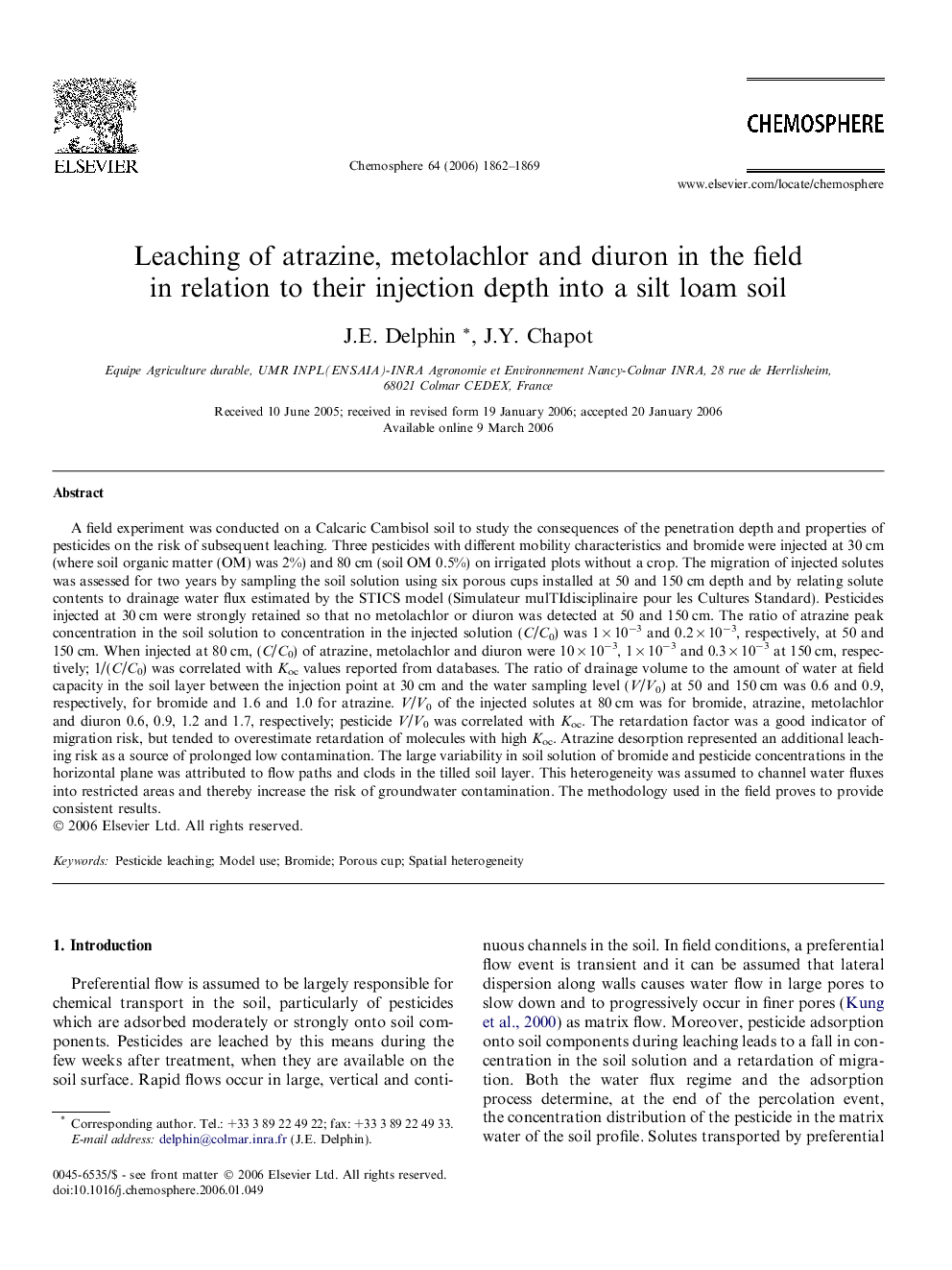| کد مقاله | کد نشریه | سال انتشار | مقاله انگلیسی | نسخه تمام متن |
|---|---|---|---|---|
| 4416332 | 1307777 | 2006 | 8 صفحه PDF | دانلود رایگان |

A field experiment was conducted on a Calcaric Cambisol soil to study the consequences of the penetration depth and properties of pesticides on the risk of subsequent leaching. Three pesticides with different mobility characteristics and bromide were injected at 30 cm (where soil organic matter (OM) was 2%) and 80 cm (soil OM 0.5%) on irrigated plots without a crop. The migration of injected solutes was assessed for two years by sampling the soil solution using six porous cups installed at 50 and 150 cm depth and by relating solute contents to drainage water flux estimated by the STICS model (Simulateur mulTIdisciplinaire pour les Cultures Standard). Pesticides injected at 30 cm were strongly retained so that no metolachlor or diuron was detected at 50 and 150 cm. The ratio of atrazine peak concentration in the soil solution to concentration in the injected solution (C/C0) was 1 × 10−3 and 0.2 × 10−3, respectively, at 50 and 150 cm. When injected at 80 cm, (C/C0) of atrazine, metolachlor and diuron were 10 × 10−3, 1 × 10−3 and 0.3 × 10−3 at 150 cm, respectively; 1/(C/C0) was correlated with Koc values reported from databases. The ratio of drainage volume to the amount of water at field capacity in the soil layer between the injection point at 30 cm and the water sampling level (V/V0) at 50 and 150 cm was 0.6 and 0.9, respectively, for bromide and 1.6 and 1.0 for atrazine. V/V0 of the injected solutes at 80 cm was for bromide, atrazine, metolachlor and diuron 0.6, 0.9, 1.2 and 1.7, respectively; pesticide V/V0 was correlated with Koc. The retardation factor was a good indicator of migration risk, but tended to overestimate retardation of molecules with high Koc. Atrazine desorption represented an additional leaching risk as a source of prolonged low contamination. The large variability in soil solution of bromide and pesticide concentrations in the horizontal plane was attributed to flow paths and clods in the tilled soil layer. This heterogeneity was assumed to channel water fluxes into restricted areas and thereby increase the risk of groundwater contamination. The methodology used in the field proves to provide consistent results.
Journal: Chemosphere - Volume 64, Issue 11, September 2006, Pages 1862–1869